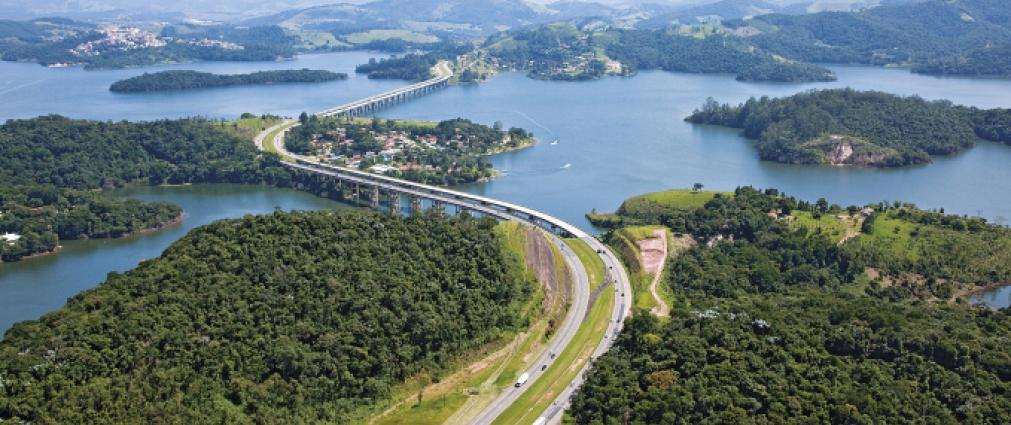Projects that transformed Rio de Janeiro

Rio de Janeiro has received major projects in recent years and residents and tourists in the “Wonderful City” have followed their completion and reap the benefits until today. Take a look at them!
New Elevado do Joá elevated highway

This wonderful project was extremely challenging. The team had an immutable deadline to complete the project due to the start of the Olympics. In addition, the construction was performed in a region which is close to the sea, between rocks and escarpments, nearby a residential area and with the requirement of maintaining the old elevated highway. The new road was built next to it and open as usual to traffic! The New Elevado do Joá currently receives approximately 85,000 vehicles per day, improving the traffic in Rio de Janeiro.
Subway Line 4

With 9,000 co-workers, 22 work sites at the height of the construction and the use of 365 items of equipment, including a laser-guided tunnel-boring machine, the work on Rio de Janeiro Subway Line 4 was incredible! Today the line connects Barra da Tijuca to the Ipanema neighborhood in just 13 minutes, with 32 kilometers of tracks. As well as the benefits to the population, this form of transport generates improvements to the environment, thanks to the replacement of diesel-powered vehicles by electric traction transport. Vehicles powered by electricity generate 60% less CO2 than cars and 40% less than buses.
Light Rail Transport (LRT)

And when speaking of LRT, this means of transportation deserves a special mention. A symbol of change in the social and economic dynamics experienced by the city of Rio de Janeiro, the LRT connects the port region to the city’s financial center and the Novo Rio bus station to Santos Dumont airport. It was one of the first means of transportation in the world designed without overhead power lines. The supply of energy takes place through a third track on the ground! Environmental impact is reduced, as it does not use fossil fuel, does not emit toxic gases and has low vibration and noise levels. Approximately 300,000 passengers use the LRT every day.
The Wonderful Port

With 9,600 jobs generated at the peak of the work, o Maravilha Port is one of the greatest legacies left by the Olympic Games. The port region was revitalized, with new cultural spaces (such as the Museum of Tomorrow), greater integration between the means of transportation, spaces for pedestrians and cyclists and a new water, sewage, drainage and electricity network. Seventy kilometers of new roads were built, 700km of urban infrastructure networks upgraded and 17km of cycle paths created. Renovation for the enjoyment of both Rio de Janeiro’s residents and tourists!
The Transolympic road infrastructure

This road structure connected the largest installations at the Olympic Games, such as the Athletes’ Villa, the Olympic Park and Radical Park, and today reduces the journey from the West to the North Zone of Rio de Janeiro, which used to take two and a half hours, to just 30 minutes! Approximately 55,000 vehicles pass along the express road per day and one of the lanes is for exclusive use by the Rio de Janeiro BRT, in which 70,000 people are transported per day.
RIOgaleão –Tom Jobim International Airport

Rio de Janeiro international airport was expanded and renovated in order to receive the increased demand from the Olympics, with a new 100,000 m2 pier, and an 81% increase in the number of embarkation bridges. One of the main highlights was the construction of the airport’s new garage building, with 3,000 parking spaces, 75 new stores and restaurants and 33 check-in desks. With all these improvements, the airport now has the capacity to receive up to 30 million users per year, compared to 17 million people in 2015. Isn’t that amazing?






